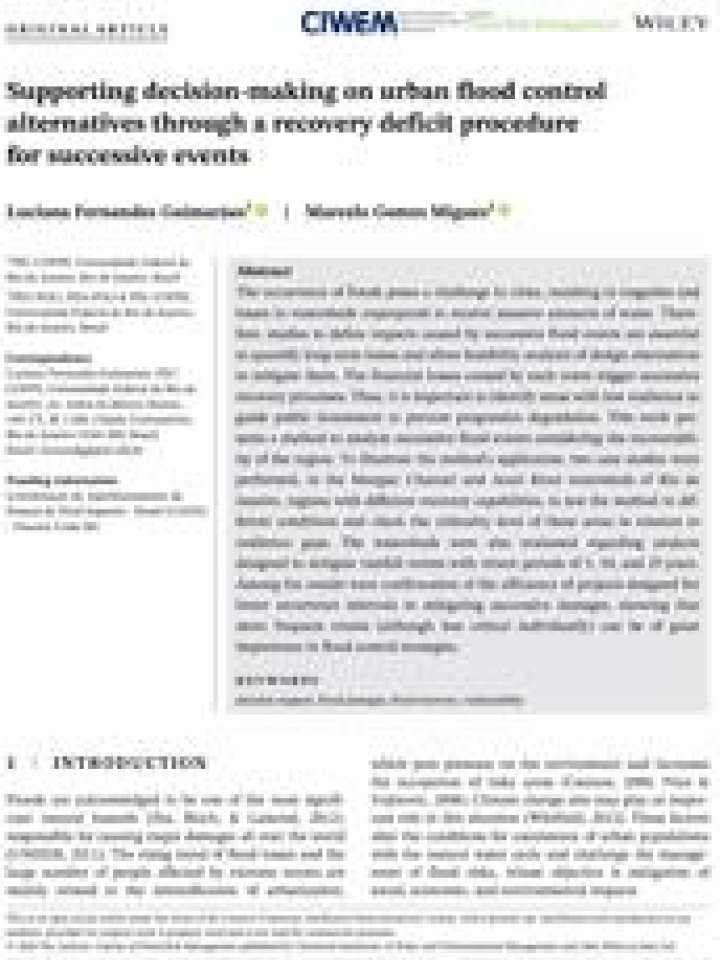Supporting decision‐making on urban flood control alternatives through a recovery deficit procedure for successive events
The occurrence of floods poses a challenge to cities, resulting in tragedies and losses in watersheds unprepared to receive massive amounts of water. Therefore, studies to define impacts caused by successive flood events are essential to quantify long‐term losses and allow feasibility analysis of design alternatives to mitigate them. The financial losses caused by each event trigger successive recovery processes. Thus, it is important to identify areas with low resilience to guide public investment to prevent progressive degradation. This work presents a method to analyze successive flood events considering the recoverability of the region. To illustrate the method's application, two case studies were performed, in the Mangue Channel and Acari River watersheds of Rio de Janeiro, regions with different recovery capabilities, to test the method in different conditions and check the criticality level of these areas in relation to resilience gaps. The watersheds were also evaluated regarding projects designed to mitigate rainfall events with return periods of 5, 10, and 25 years. Among the results were confirmation of the efficiency of projects designed for lower recurrence intervals in mitigating successive damages, showing that more frequent events (although less critical individually) can be of great importance in flood control strategies.
Explore further
